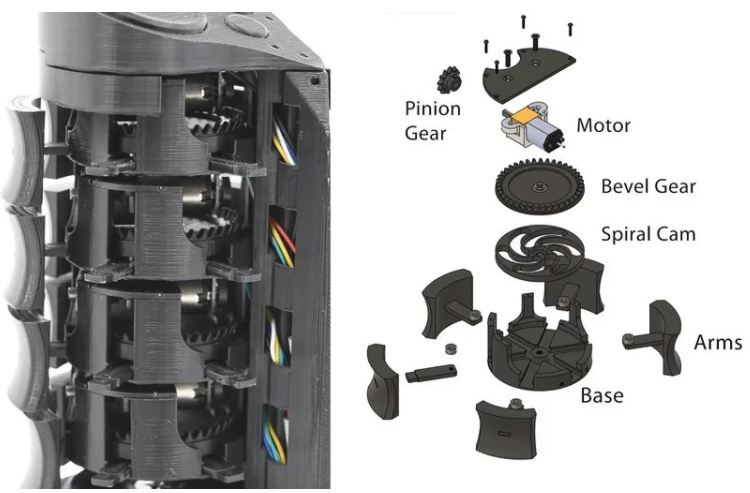Microsoft X-Ring is an Adaptive VR Controller
The X-Ring controller prototype shows Microsoft is interest in virtual reality after all. The controller can adjust its shape to mimic virtual objects in VR.
X-Rings is a hand mounted 360-degree shape display for grasping in virtual reality. While many vr apps let users pick up and use different objects, users are usually limited to feeling the shape of the static controller in their hands.
With X-rings, the size and shape of virtual objects can be felt directly from the controller as it changes shape.
The dubbed X-rings adjusts grip size to any object you are looking at in virtual reality, whether is the neck of a bottle or to hilt of a sword.
The controller consists of four motor-controlled expandable rings that work together to generate 3d graspable surfaces.Each ring can alter its diameter between 5.7 and 7.7 centimeters and support up to 15 newtons of squeezing force.

Because shape rendering takes less than 100 milliseconds, X-rings can quickly change between different objects that the user may be selecting. Through capacitive sensing, X-rings is also able to sense whether the user is grasping the device, so their virtual hand can be animated.
By mounting the device to the hand, the user's fingers can move freely in space, and only make contact when they grasp the virtual object.
Current sensing through each motor also gives x-rings a measure of the pressure applied to each ring. This allows render of physically interactive objects, such as objects like glass or ceramic that can break or deform when squeezed.
The controller is consist of four rows of plates that can adjust in 2cm range at 100ms speed. This means adjustments occurs in just few frames, while each plate has a capacitive touch sensor to detect finger movements in virtual reality.
Each layer of X-rings is controlled by a single motor. As the motor turns, a set of right-angle gears rotates a spiral cam, which drives five arms radially inward and outward. A bearing on each arm minimizes sliding friction with the cam.
A study was performed to evaluate how well users associate the shapes rendered by x-rings with visually presented objects . Users were shown six potential objects and instructed to grasp the device, and to guess which object they were holding.
Microsoft's research shows that users can easily match the object shape and feel with 80% accuracy. The controller is placed on Vive Tracker for it to be tracked in 3D space.

